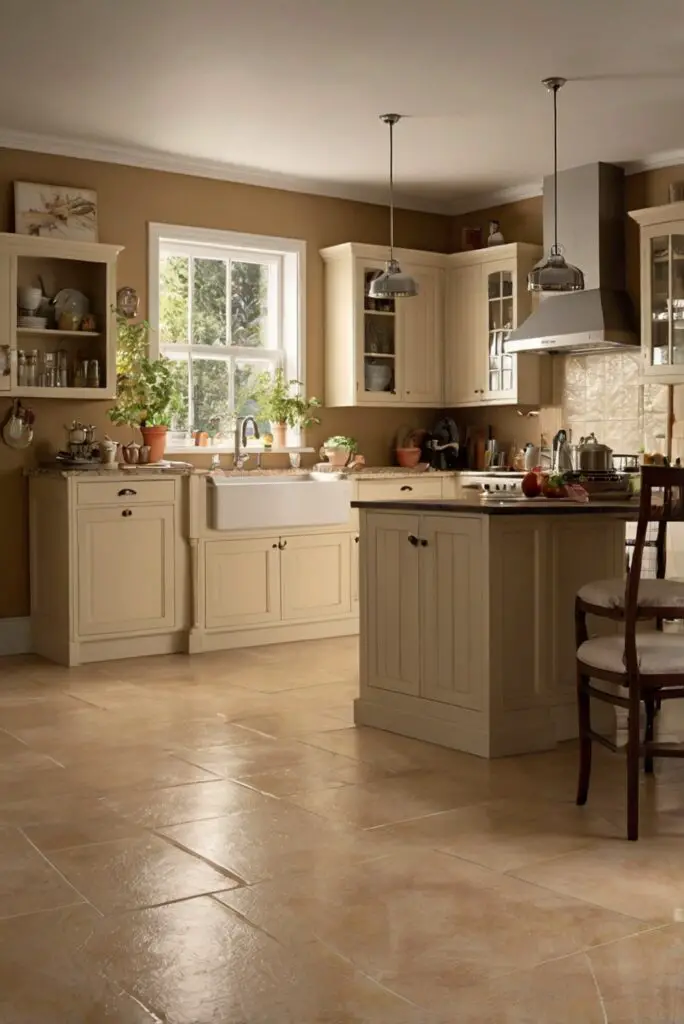Looking to transform your kitchen into a cozy retreat? Discover how color can create a warm, inviting atmosphere in this comprehensive guide.
To create a warm and inviting atmosphere in your kitchen with color, start by selecting warm tones like reds, oranges, and yellows. These colors evoke a cozy feeling and can make the space feel welcoming. Consider painting an accent wall in a rich hue or adding colorful accessories like curtains or rugs. Mix in some natural elements like wood or plants to add warmth. Be mindful of the color wheel when selecting colors to ensure they complement each other. Use primer paint for walls before applying the final color to ensure a smooth finish. Incorporate lighting to highlight the colors and create a cozy ambiance.
How can I choose the right color scheme for my kitchen to create a warm and inviting atmosphere?
Choosing the right color scheme for your kitchen is essential in creating a warm and inviting atmosphere. To achieve this, consider warm tones such as earthy hues like terracotta, warm neutrals like beige or cream, and shades of red, orange, or yellow. These colors are known to evoke feelings of warmth and coziness, perfect for a kitchen setting. You can also opt for deep, rich colors like burgundy, olive green, or navy blue to add depth and sophistication to the space. When choosing a color scheme, make sure it complements the rest of your home’s decor for a harmonious flow throughout.
What are some popular warm colors that work well in a kitchen setting?
My Lovely Spring Paint for 2025
Ready for a Spring Makeover? Explore the Freshest 2025 Paint Trends!
White Sage/Green SW Pistachio green Soft blue Honeysweet/Orange Pink Sugar Sage Tint BMAs an Amazon Associate, I may earn a commission from qualifying purchases at no extra cost to you.
Popular warm colors that work well in a kitchen setting include warm neutrals like taupe, beige, and cream. These colors provide a soft and inviting backdrop that can be easily paired with other hues. Additionally, shades of red such as terracotta, rust, or crimson can create a cozy and welcoming atmosphere in the kitchen. Yellow tones like mustard, goldenrod, or buttercup can also add a cheerful and sunny vibe to the space, making it feel warm and inviting.
Can I use different shades of the same color in my kitchen to achieve a cohesive look?
Using different shades of the same color in your kitchen can be an effective way to achieve a cohesive and harmonious look. For example, you can pair light and dark shades of blue or grey to create a layered and textured space. Mixing various tones of green or brown can also add depth and interest to the kitchen design. By incorporating different shades of a single color, you can create a visually appealing and unified look that ties the whole room together.
How important is lighting in creating a warm atmosphere in the kitchen, and what lighting options should I consider?
Lighting plays a crucial role in creating a warm atmosphere in the kitchen by enhancing the colors and textures of the space. To achieve this, consider a combination of ambient, task, and accent lighting. Ambient lighting provides overall illumination and sets the mood, while task lighting focuses on specific work areas such as the countertops or island. Accent lighting can highlight architectural features or artwork, adding depth and dimension to the room. Choose warm white bulbs with a color temperature of around 2700-3000K to create a cozy atmosphere that complements your color scheme.
What are some accent colors that can be used to add pops of warmth to a kitchen?
My fAV Spring DECOR for 2025
Discover Spring’s Best 2025 Decor Combinations – Perfect for Any Room!
Oversized Indoor Plants White Curved Sofas Rugs BOH Brown Cream Moroccan Hype Boho Rug Outdoor Patio Furniture Sets Topfinel Pillow CoversAs an Amazon Associate, I may earn a commission from qualifying purchases at no extra cost to you.
To add pops of warmth to your kitchen, consider accent colors like burnt orange, deep red, or mustard yellow. These hues can be used sparingly in accessories, textiles, or small decor items to inject energy and vibrancy into the space. Copper or brass accents are also great options to introduce warmth and shine to the kitchen. Additionally, natural elements such as wood, rattan, or terracotta can add a touch of warmth and texture to the design, enhancing the overall cozy atmosphere.
What are some color combinations that complement each other well in a kitchen space?
When selecting color combinations for your kitchen, consider pairing warm tones with complementary or contrasting hues for a balanced look. For example, you can combine warm neutrals like beige and cream with accents of navy blue or olive green for a sophisticated and timeless palette. Earthy colors such as terracotta and sage green work well together to create a calming and organic feel. Experiment with different combinations to find the right balance of colors that harmonize and elevate the overall look of your kitchen.
How can I incorporate color into my kitchen decor without overwhelming the space?
To incorporate color into your kitchen decor without overwhelming the space, start by choosing a neutral base color for the walls, cabinets, and larger furniture pieces. Then, introduce pops of color through smaller items like rugs, curtains, linens, or decorative accessories. You can also use plants or fresh flowers to add natural hues to the space while bringing life and freshness to the kitchen. By layering colors strategically and keeping the majority of the space neutral, you can achieve a balanced and cohesive look that feels warm and inviting.







